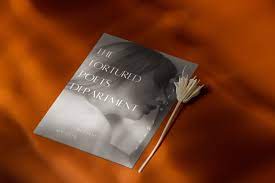West Side Story Movie Review

West Side Story– a popular musical most well-known for its presence on Broadway- is produced for the silver screen once again by Stephen Spielberg. The story is an adapted version of Shakespear’s Romeo and Juliet, but with a twist of modernity for the time in which it was written, the 1950s. Spielberg’s recreation of the iconic musical, like the original, is also set in New York during the 1950s.
Starring Rachel Zegler as Maria and Ansel Elgort as Tony, the story follows their unlikely love affair in the slums of New York City, muddled by the rivalry between the two gangs from which they belong. While the currency has not fully carried over to the 21st century, many of the subjects grappled in the movie are relevant to present day, including the subjects of race and sexuality.
The movie begins with a tour of the slums, the home of both the Puerto Rican Sharks and the Caucasian Jets. The audience follows the Jets as they walk through New York City, only stopping to dance and cause trouble. The dancing was exceptionally choreographed, adding to the playfully deceptive personalities of the gangs. And did I mention the snapping? Spielberg included the infamous snapping-while-walking combination of the original West Side Story film, a staple that makes the movie identifiable to all. After somewhat peacefully gliding through the slums, the Jets hit the end of their boundary and keep walking, straight into Shark controlled territory. After a frenzied fight between the two gangs, you are officially introduced to Riff (Mike Faist) and Bernardo (David Alvarez), the leaders of each gang. The rivalry between the gangs centers around the resentment of the Caucasian Jets towards the Puerto Rican Sharks for “stealing” jobs that belong to citizens and not immigrants.
Eventually, you meet Tony, an idealistic boy who was previously much involved with the Jets but moved on after being arrested for nearly killing someone; an act that continues to haunt him. He is introduced when Riff, his best friend and co-founder of the Jets, petitions Tony for assistance with proposing a “rumble” to the Sharks, a fight that would end the feud for good. Tony, trying to separate himself from the gang life, says no and is supported by his landlord and mother figure, Valentina. Valentina is played by Rita Moreno, who starred as Anita in the version produced in 1961.
Later, you are introduced to Maria, a vibrant girl who recently moved from Puerto Rico to the United States. During scenes with the Sharks, people of Latin heritage, Spielberg included the use of Spanish- without subtitles- to add to the authentic portrayal of immigrants moving to the United States. Maria is good friends with Anita (Ariana Debose), the girlfriend of Bernardo, Maria’s brother. They, along with Chino (Josh Andrés Rivera), attend a party which includes themselves, the Sharks, and the Jets. Exuberant dancing, the quality of which could only be achieved by experienced dancers, once again occurs as Tony unexpectedly enters. He opts to not dance, but notices Maria as she twirls around the room. They catch each other’s eye, and the rest is history. The two quite literally fall in love at first sight, an unclear scene in which the lovers seem to both telepathically understand that they should converge in secrecy.
The audience, both impressed and bewildered by their mutual understanding, watch as the two go underneath the bleachers of the school gym to meet. It is then obligated to watch the universally excruciatingly awkward moments that people experience when first speaking to someone they are attracted to. The gangs discover the two spending time together and agree that the time has come to settle their grievances once and for all with a rumble.
The rest of the story involves Tony and Maria’s whirlwind romance, consisting of juvenile perceptions of love. The end, like Romeo and Juliet, is filled with tragedy, each gang shifting from ignorant to evil, punctuated by the penetrations of a knife. The lovers’ affair dies with their people, but a rebirth finalizes the movie, both gangs coming together to grieve those they lost.
West Side Story is simultaneously beautiful and disappointing, a combination achieved by numerous factors. The story line is saved solely by the side characters and their struggles, which overshadows the trite love story of Tony and Maria. The topics of the movie are improved upon during the recreation, mainly the ethnicities of the Sharks. In the original movie, Natalie Wood played Maria, a woman who did not have Latin roots. The actors that play the new Sharks, including the new Maria, are all Hispanic, an important detail that should have been accounted for during the first movie. Stephen Spielberg’s rendition of the film is magnificent, an expectation that he not only lived up to but surpassed. Spielberg’s innuendos and symbolism tell the story better than the actors portraying the characters (though each member of the cast seems to be made for the characters that they play). The use of warm and cool tones of the lighting and costumes add to the ambiance of the film, so much that one could recognize who was about to grace the scene just by the temperature of the lighting. All in all, West Side Story is a well-made movie that’s flaws are outshone by its excellent production and cast.
I rate this movie 3.5/5 shields.










